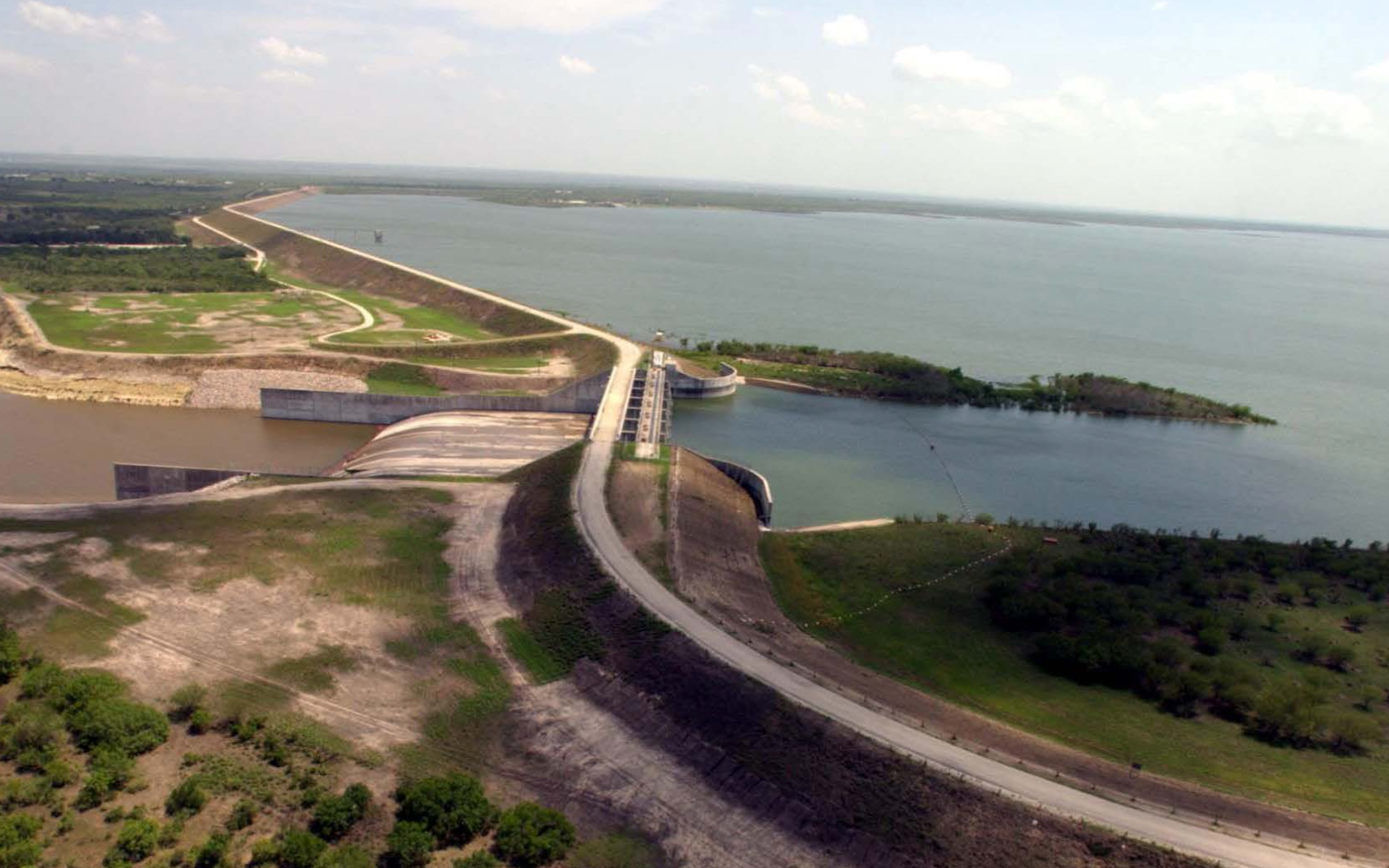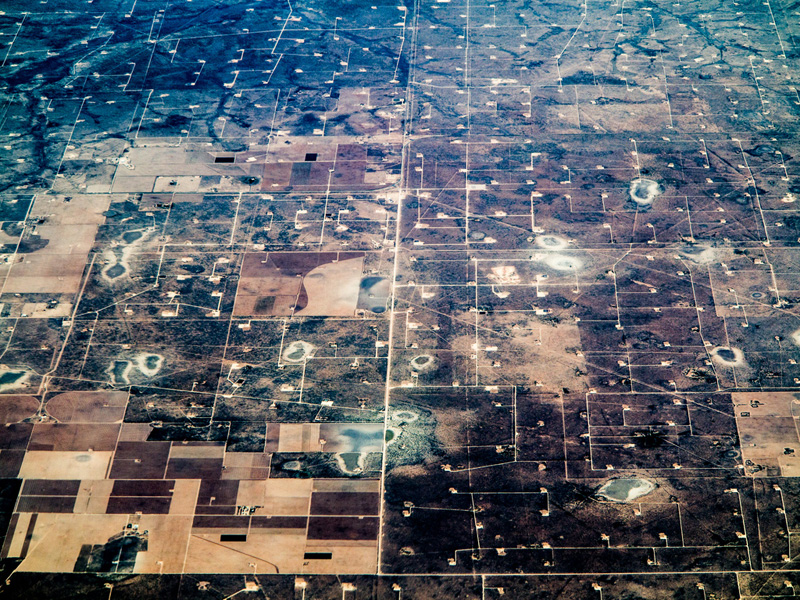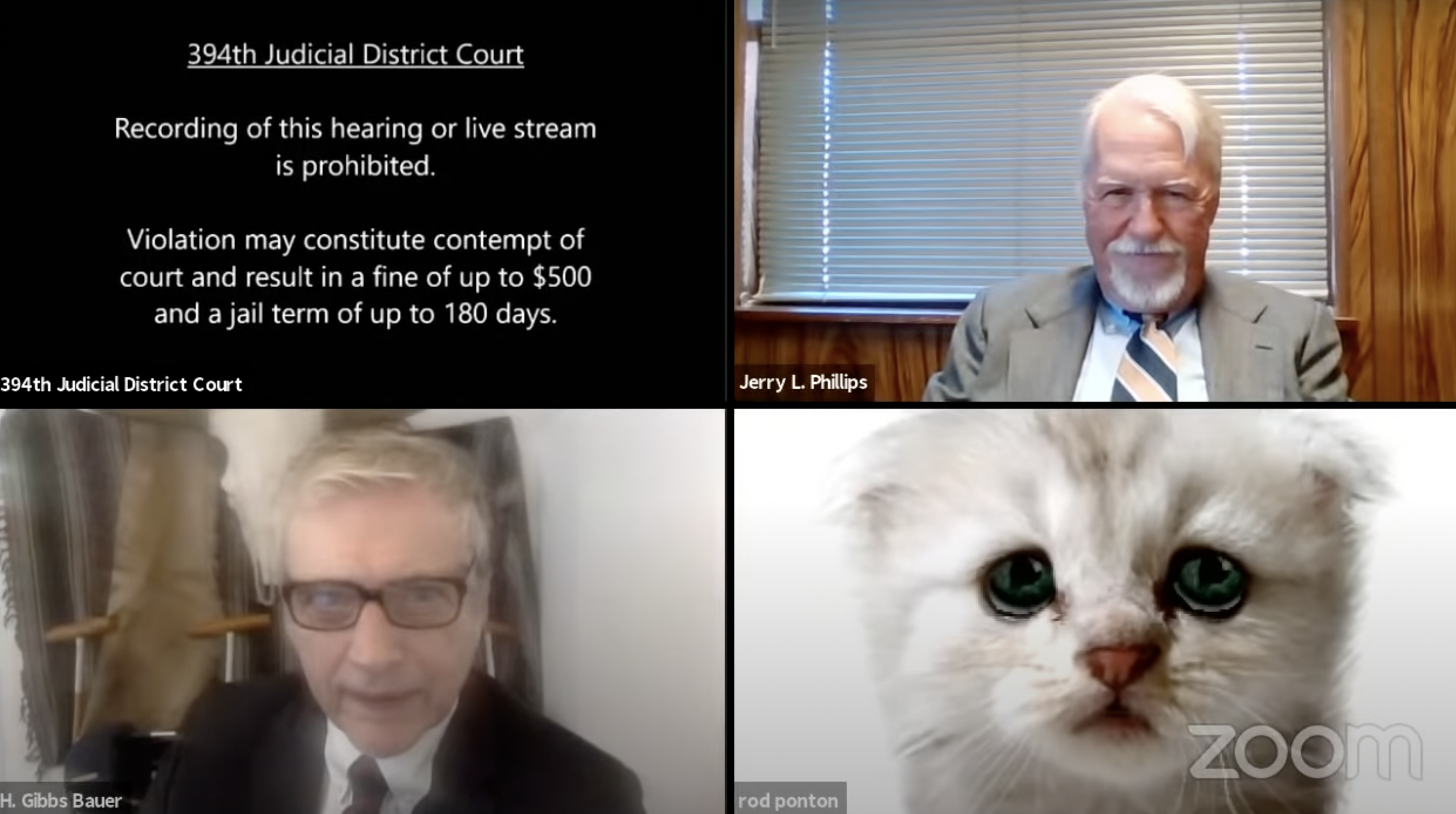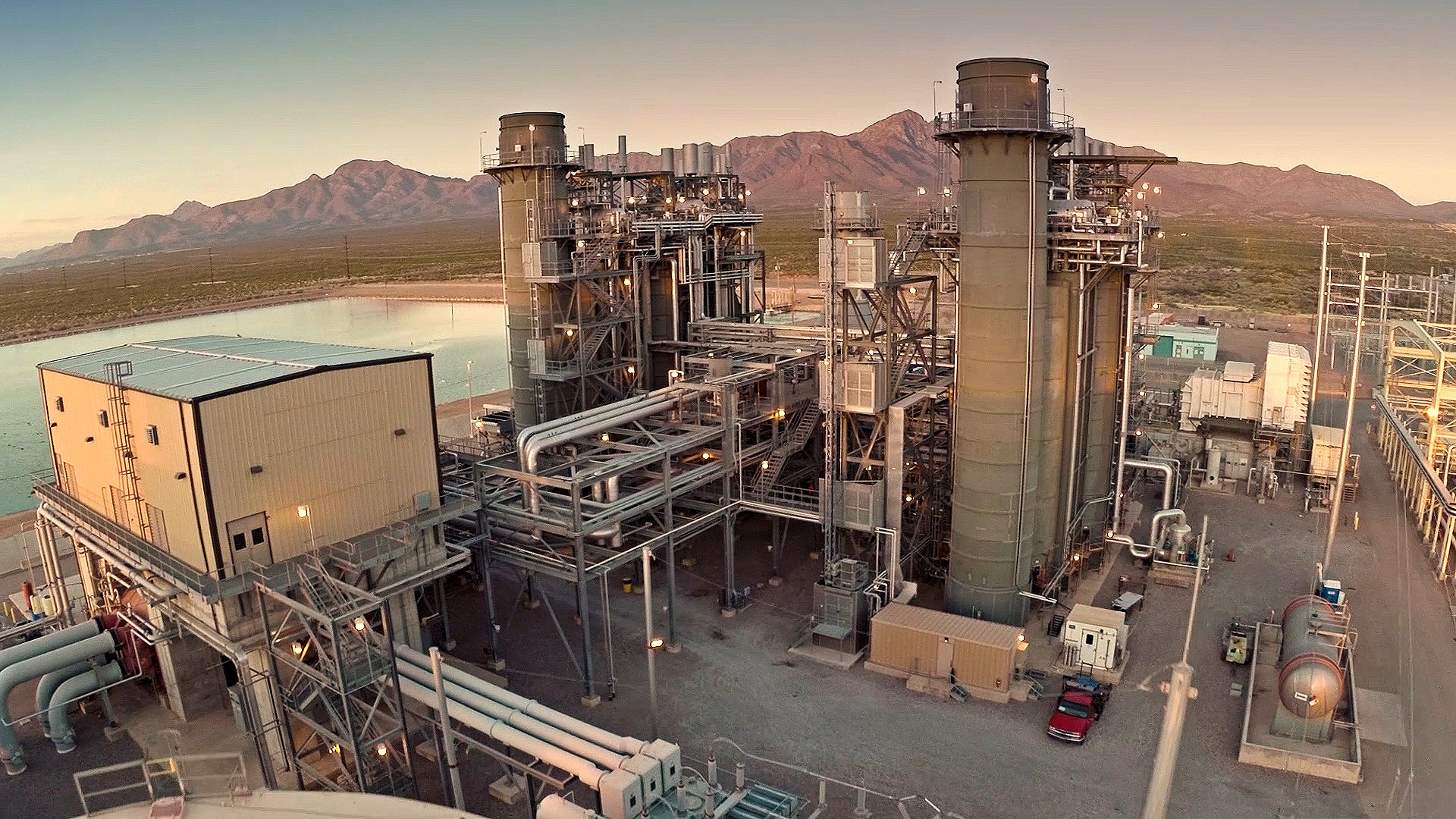
Biden Plans to Ban All New Fracking Leases on Public Land. Will He Actually Do It?
The federal Bureau of Land Management has a habit of auctioning off parcels of its land to oil and gas developments. For years, Texas cities and environmentalists have sounded the alarm about the arrangements.

A version of this story ran in the March / April 2021 issue.
Above: Choke Canyon Dam across the Frio River was completed in 1982 to create Choke Canyon Reservoir.
In 2017, the oil industry, aided by Donald Trump’s Interior Department, set its sights on a swath of plains northwest of Corpus Christi. The 1,600 acres, located in and around Choke Canyon Reservoir, were deemed attractive by drillers who wanted to set up fracking operations there. The reservoir is located in the Eagle Ford Shale play, the state’s second richest oil field. The federal government could, if it so chose, auction off the parcels to the highest bidder, allowing drillers to frack the natural resources far below the ground.
Environmentalists and officials with the City of Corpus Christi sounded the alarm. They protested the sale, arguing that not enough investigation had been done to determine whether drilling would contaminate the reservoir, a crucial source of drinking water for the nearly half a million residents of Corpus Christi and 17 surrounding towns. They had good reason to worry, since a number of oil wells in the area that had purportedly been plugged had actually leaked into the reservoir, unbeknownst to residents. Opponents had already battled back a leasing plan for Choke Canyon in 2016, but this time their luck ran out; the government went ahead with the sale anyway.
Then, in 2020, the Bureau of Land Management (BLM) auctioned off even more land around the lake. For four years, “they have brought up Choke Canyon over and over again [for auction],” says Rita Beving, an outreach coordinator for the nonprofit Clean Water Action who fought a similar proposal near Lake Lewisville in 2016. In that case, a coalition of cities and activists defeated the proposal by demonstrating how hydraulic fracturing, a technology that allows drillers to unlock vast reserves of oil and gas by pumping chemical-laden water into the earth, could critically weaken the lake’s aging dam. Beving chalked up the sales at Choke Canyon, at least in part, to a less robust opposition campaign than in Lewisville.
Now, due to an executive order by President Joe Biden, battles over new fracking leases on federal land may become scarcer. Just one week after being inaugurated, Biden made good on a campaign promise to pause new fracking leases on federal land for a year while his administration studied the issue. The move is part of Biden’s initiative to reduce greenhouse gas emissions; the oil and gas industry was responsible for emitting methane, a potent greenhouse gas, equal to 175 million metric tons of carbon dioxide in 2018.
Trump’s administration offered up vast public lands for oil and gas development. Five million acres of it was just off the Texas shore in the Gulf of Mexico. As of February 2020, companies had leased 9.9 million acres nationwide under Trump’s oversight. Biden’s order won’t affect existing leases, but it would stop many new ones from being offered at auction. That’s notable, since the sales in Corpus Christi show that industry will repeatedly try to obtain leases even after temporary setbacks.
Texas doesn’t have a ton of public land to spare for drillers. The state has just a fraction of the public acreage of states such as Colorado, Utah, and New Mexico. Still, the Lone Star State has four national park sites that have active oil and gas activity: Alibates Flint Quarries and Lake Meredith in the Panhandle; Big Thicket Nature Preserve in East Texas; and Padre Island National Seashore on the South Texas coast. Both the Big Thicket and Padre Island sites stand to be affected if proposed offshore drilling plans advance.
The order could also keep Texans from having to clean up future messes from new oil field leases on federal land. At the Padre Island site, for example, environmentalists are on a mission to plug and reclaim 11 abandoned wells left behind from previous development there. The cleanup is estimated to cost $1.3 million.
“It’s going to do permanent damage for years to come if we don’t get fracking under control on public land. On all land,” Beving says.
Read more from the Observer:
-
Editorial: Texas Wasn’t Prepared for the Statewide Vaccine Rush
My elderly parents’ experience getting the COVID-19 vaccine highlights problems with Texas’ overall pandemic response. -
What to do With a “Tidal Wave” of Texas Wind Turbine Blades: The wind energy industry is struggling to find sustainable solutions for fast-accumulating piles of dead wind turbine blades. So far, all the options come with an environmental price.
-
In ‘At the Ready,’ Latinx High Schoolers Train to Be Border Patrol Agents: A new documentary tells one story of the border through three conflicted young Texans’ job prospects, and the result is emotional, relational, and hard to categorize.


